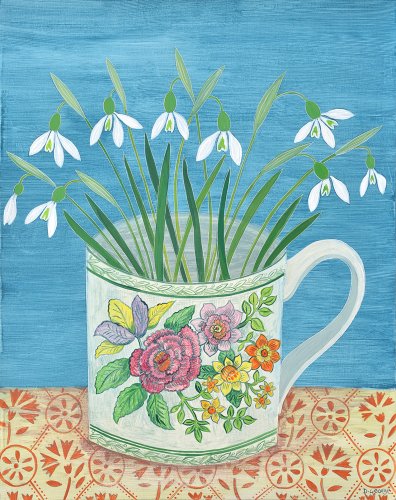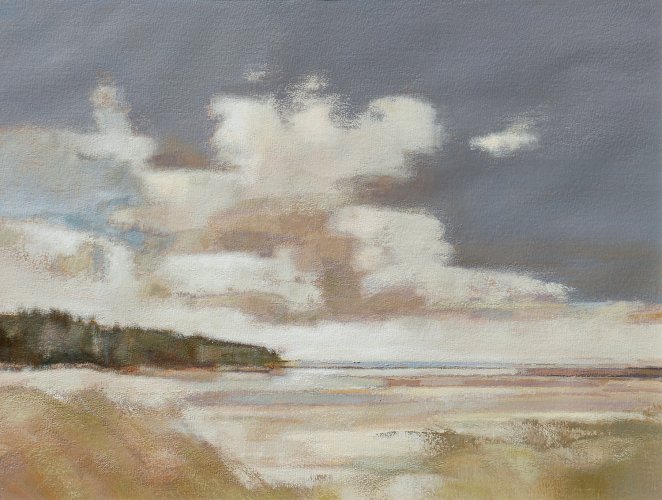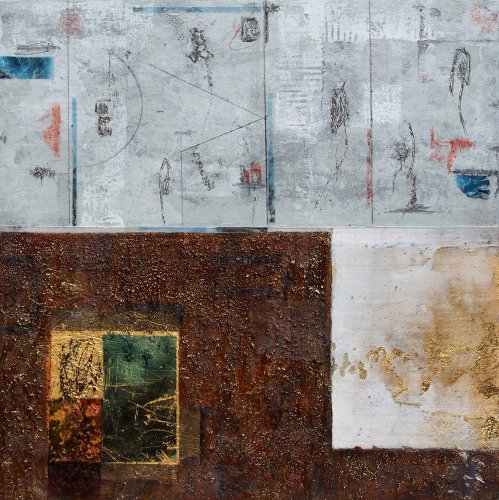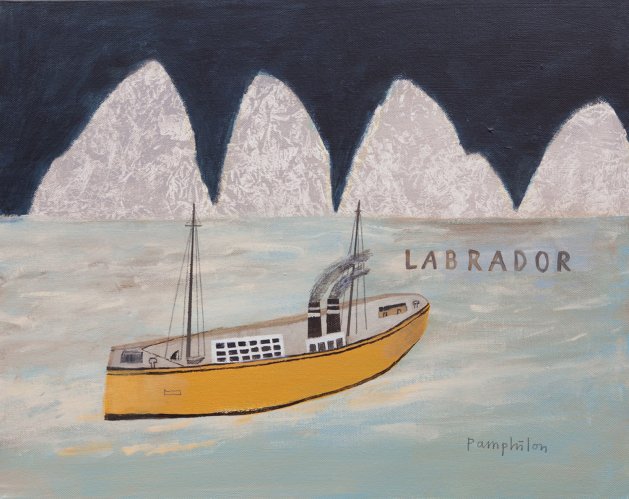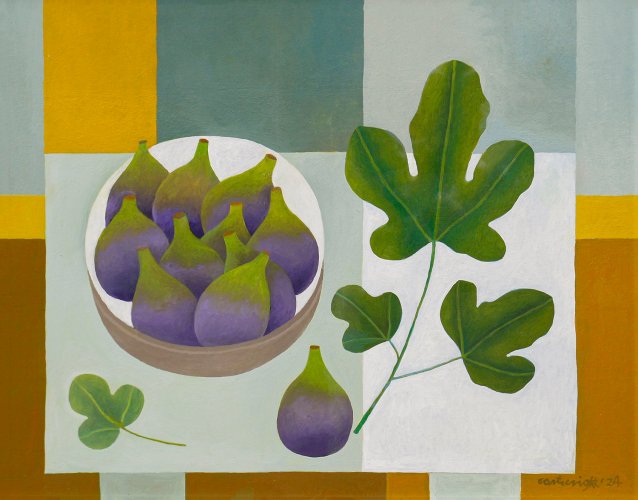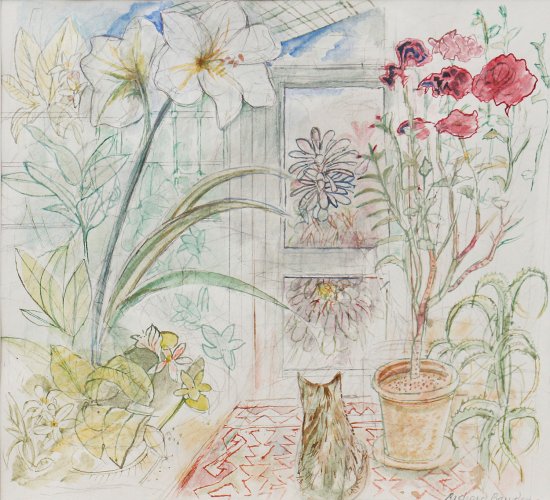Painting is the practice of applying color to a surface (support base) such as paper, canvas, wood, or plaster in combination with drawing, composition and other aesthetic means in order to manifest the expressive and conceptual intention of the artist.
In this section:
- Acrylic
Polymer-based paints in which an acrylic resin serves as a vehicle. Acrylics differ from oil paints in that they have shorter drying times (as little as 10 minutes) and are soluble in water. These types of paint eliminate the need for turpentine and gesso, and can be applied directly onto canvas. Aside from painting with concentrated color paints, acrylics can also be watered down to a consistency that can be poured or used for glazing.
See artists:
- Back to top
- Gouache
Gouache - pronounced "gwahsh" is derived from the Italian "guazzo", meaning a place where water is found. Otherwise known as body colour, it is a paint consisting of pigment suspended in water with Gum Arabic as a binding agent. The pigment has larger particles than in watercolour, the ratio of pigment to water is greater, and the paint is given body by the addition of an inert white material such as chalk. Gouache is heavier and more opaque than watercolour, with greater reflective qualities.
Gouache is diluted with water for use. The paint generally dries to a different tonal value than when wet (lighter tones dry darker, while darker tones dry lighter), which can make it difficult to control colors. But it has the advantages of quick coverage and total hiding power, so that gouache lends itself to more immediate techniques than watercolour.
- Back to top
- Mixed Media (Painting)
Mixed media describes a work of visual art that combines various traditionally distinct media, sometimes with materials not traditionally associated with art. For example, paint and ink may be combined with collage and found objects. In this manner, many different elements may be employed as a means of expression.
The use of mixed media began around 1912 with the Cubist collages and constructions of Pablo Picasso and Georges Braque and has become widespread as artists developed increasingly open attitudes. Essentially art can be made of anything or any combination of things.
See artists:
- Back to top
- Oil Painting
A paint made by grinding pigment in oil, usually linseed oil.
Modern oil painting evolved in the 15th century when Jan van Eyck found that linseed oil and oil from nuts could be mixed with pigments to create a flexible and durable medium with vibrant colours.
Oil is one of the most forgiving mediums - the paint has a long drying time, can be used layer upon layer with the correct techniques, can be easily manipulated on the canvas and can be wiped off with a cloth dipped in turpentine.
The extraordinary flexibility of oil colour lends itself perfectly to the traditional painting techniques of blending and glazing, impasto and scumbling on a multitude of surfaces.
See artists:
- Back to top
- Pen & Wash
Drawings made by applying ink with a pen. Metal pens succeeded the quill during the nineteenth century. Pen and ink is often used in conjunction with other techniques such as watercolour washes. Indian Ink is waterproof, so the application of watercolour will not disturb an initial ink drawing.
- Back to top
- Watercolour
Watercolour is a painting method using paints which are made of pigments suspended in a water-soluble medium, traditionally gum arabic. Paper is the most common support for watercolour, but others include papyrus, bark papers, vellum, leather, fabric, wood, and canvas. The paint is manufactured in solid form and in tubes and is diluted with water for application using soft brushes.
See artists:
- Back to top
